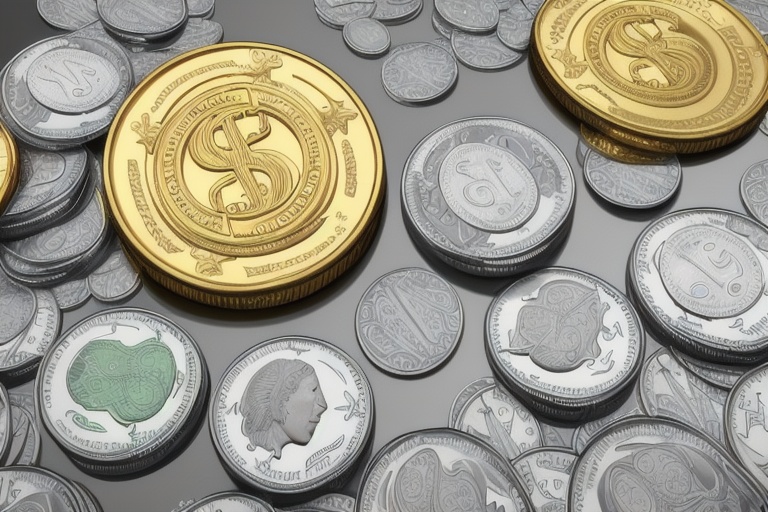The Kwacha: A Glimpse into Zambia's Economy
The Kwacha: A Glimpse into Zambia's Economy
The Kwacha, denoted by the ISO 4217 code ZMW, stands as the sovereign currency of Zambia, subdivided into 100 smaller units called Ngwee. Not limited to the confines of Zambia, this currency also circulates unofficially in neighboring Zimbabwe and Malawi, particularly within regions proximate to their borders. The responsibility for the issuance and regulation of the Zambian currency rests firmly in the hands of the Bank of Zambia, an institution that has steered the Kwacha through several transformations prompted by inflationary pressures and shifts in economic paradigms.
Historical Emergence and Evolution
The Nyanja language gifts us the term "Kwacha," which translates to "dawn," symbolizing the start of something new—a fitting epithet for a nation's currency. Since its inception, the Kwacha has indeed been a kind of economic sunrise for Zambia, although not without its intermittently cloudy days.
In recent years, as of July 2022, the Zambian economy faced inflation rates at around 9.8%, as reported by the Central Statistical Office. Such economic challenges are not novel; they have historically influenced the currency, necessitating updates and revisions to maintain its practicality in trade and commerce.
Ensuring Authenticity
The Bank of Zambia has proactively engaged with commercial banks to fortify their ability to recognize authentic Zambian banknotes. An archive of press releases and informative documents stands testament to this endeavor. These efforts were particularly crucial when the bank introduced a new series of banknotes between 2012 and 2014, aiming to educate the public on recognizing the security features of these redesigned currencies.
Commemorative Celebrations in Currency
Zambia has minted several memorable banknotes to commemorate pivotal moments in the nation's history. Notable among these are the 1 Kwacha note of 1973, which celebrated the advent of the Second Republic of Zambia, and the unique 50 Kwacha note of 2014, marking the golden jubilee of the country's independence.
The Kwacha Rebasing Process
A key milestone occurred in 2012 when Zambia embarked on a "rebasing" process for its currency, swapping the old Kwacha for the new with a conversion ratio of 1 second Kwacha (ZMW) for every 1,000 first Kwacha (ZMK). This rebasing simplified the denominations in use, addressing the unwieldiness of transactions involving large sums of the older currency.
Numismatic Resources and Cataloguing
For the diligent numismatist and curious enthusiast, the Kwacha's narrative has been meticulously chronicled in publications like the Standard Catalog of World Coins, emphasizing coin issues from 1801 to 1991, and the Standard Catalog of World Paper Money, which documents global currency releases. These catalogs remain crucial repositories of information for anyone seeking to delve deeply into Zambia's numismatic past.
Beyond printed volumes, online catalogs offer expansive knowledge bases on Zambian currencies, tracing back to the paper money issues since 1963 and coinage from 1964. These databases are invaluable tools for both the dedicated collector and the scholar of monetary history.
Dynamic Valuation and Exchange Rates
Undeniably, the Kwacha's value is anything but static, with fluctuations reflecting Zambia's economic tremors. Currency consultants and collectors must seek accurate and updated exchange valuations provided by online platforms like Google Finance, Yahoo! Finance, XE.com, and OANDA. These services are instrumental in offering real-time exchange rates, aiding those engaged in various financial transactions or investments linked to the Kwacha.
Synthesis of Past and Present
Zambia's economic tale, as narrated through its currency, provides illuminating insights into the Kwacha's evolving role and serves as a barometer of the country's fiscal health. From transformational moments to commemorative issues, each phase of the Kwacha's history offers lessons in economic resilience and strategic adaptation.
The consultation of up-to-date resources, alongside historical records, not only satisfies the collector's passion but also enriches understanding of the broader economic context in which the Kwacha operates. As the nation's official medium of exchange, the Kwacha articulates Zambia's monetary trajectory and continues to embody its economic spirit.
Collectors and aficionados recognize that the value of the Kwacha transcends mere currency transactions; it encapsulates a complex interplay of history, economy, and national identity. The Kwacha is more than just the currency of Zambia; it is a mirror that reflects the nation's struggle for economic stability, and a testament to its identity and aspirations. It is clear that the Kwacha will persist in narrating stories of Zambia's economic chapters, capturing the attention of numismatists and economists alike, as it spirals into the future.
Information for this article was gathered from the following source.

